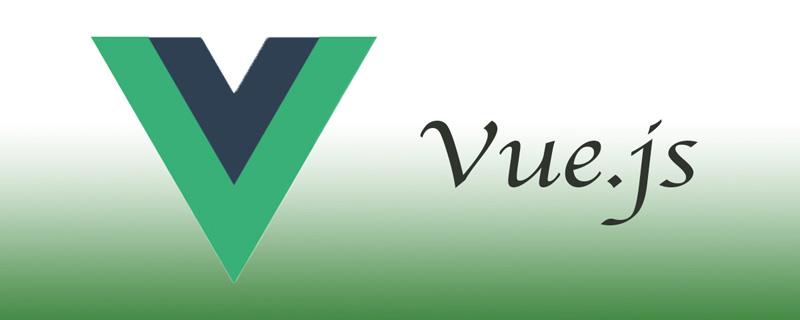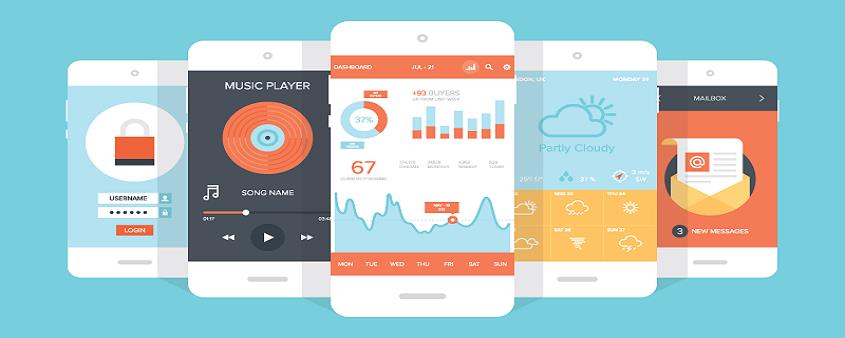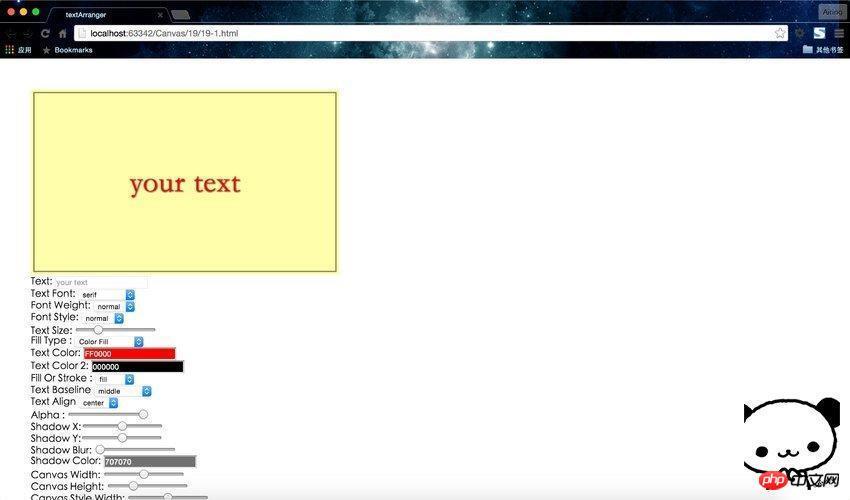传值方式有:props和“$emit”、“$attrs”和“$listeners”、中央事件总线、v-model、provide和inject、“$parent”和“$children”、vuex、localStorage/session。

本教程操作环境:windows7系统、vue2.9.6版,DELL G3电脑。
对于vue来说,组件之间的消息传递是非常重要的,下面是我对组件之间消息传递的常用方式的总结。
props和$emit(常用)
$attrs和$listeners
中央事件总线(非父子组件间通信)
v-model
provide和inject
$parent和$children
vuex
props和$emit
父组件向子组件传递数据是通过prop传递的,子组件传递数据给父组件是通过$emit触发事件来做到的.
Vue.component('child',{ data(){ return { mymessage:this.message } }, template:` <div> <input type="text" v-model="mymessage" @input="passData(mymessage)"> </div> `, props:['message'],//设置props属性值,得到父组件传递过来的数据 methods:{ passData(val){ //触发父组件中的事件,向父组件传值 this.$emit('getChildData',val) } } }) Vue.component('parent',{ template:` <div> <p>this is parent compoent!</p> <child :message="message" v-on:getChildData="getChildData"></child> </div> `, data(){ return { message:'hello' } }, methods:{ //执行子组件触发的事件 getChildData(val){ console.log(val) } } })在上面的例子中,有父组件parent和子组件child。
父组件传递了message数据给子组件,并且通过v-on绑定了一个getChildData事件来监听子组件的触发事件;
子组件通过props得到相关的message数据,最后通过this.$emit触发了getChildData事件
$attrs和$listeners
第一种方式处理父子组件之间的数据传输有一个问题:如果父组件A下面有子组件B,组件B下面有组件C,这时如果组件A想传递数据给组件C怎么办呢? 如果采用第一种方法,我们必须让组件A通过prop传递消息给组件B,组件B在通过prop传递消息给组件C;要是组件A和组件C之间有更多的组件,那采用这种方式就很复杂了。Vue 2.4开始提供了$attrs和$listeners来解决这个问题,能够让组件A之间传递消息给组件C。
Vue.component('C',{
template:`
<div>
<input type="text" v-model="$attrs.messagec" @input="passCData($attrs.messagec)"> </div>
`,
methods:{
passCData(val){
//触发父组件A中的事件
this.$emit('getCData',val)
}
}
})
Vue.component('B',{
data(){
return {
mymessage:this.message
}
},
template:`
<div>
<input type="text" v-model="mymessage" @input="passData(mymessage)">
<!-- C组件中能直接触发getCData的原因在于 B组件调用C组件时 使用 v-on 绑定了$listeners 属性 -->
<!-- 通过v-bind 绑定$attrs属性,C组件可以直接获取到A组件中传递下来的props(除了B组件中props声明的) -->
<C v-bind="$attrs" v-on="$listeners"></C>
</div>
`,
props:['message'],//得到父组件传递过来的数据
methods:{
passData(val){
//触发父组件中的事件
this.$emit('getChildData',val)
}
}
})
Vue.component('A',{
template:`
<div>
<p>this is parent compoent!</p>
<B :messagec="messagec" :message="message" v-on:getCData="getCData" v-on:getChildData="getChildData(message)"></B>
</div>
`,
data(){
return {
message:'hello',
messagec:'hello c' //传递给c组件的数据
}
},
methods:{
getChildData(val){
console.log('这是来自B组件的数据')
},
//执行C子组件触发的事件
getCData(val){
console.log("这是来自C组件的数据:"+val)
}
}
})中央事件总线
上面两种方式处理的都是父子组件之间的数据传递,而如果两个组件不是父子关系呢?这种情况下可以使用中央事件总线的方式。新建一个Vue事件bus对象,然后通过bus.$emit触发事件,bus.$on监听触发的事件。
Vue.component('brother1',{
data(){ return {
mymessage:'hello brother1'
}
},
template:` <p>
<p>this is brother1 compoent!</p>
<input type="text" v-model="mymessage" @input="passData(mymessage)">
</p> `,
methods:{
passData(val){ //触发全局事件globalEvent
bus.$emit('globalEvent',val)
}
}
})
Vue.component('brother2',{
template:` <p>
<p>this is brother2 compoent!</p>
<p>brother1传递过来的数据:{{brothermessage}}</p>
</p> `,
data(){ return {
mymessage:'hello brother2',
brothermessage:''
}
},
mounted(){ //绑定全局事件globalEvent
bus.$on('globalEvent',(val)=>{ this.brothermessage=val;
})
}
}) //中央事件总线
var bus=new Vue(); var app=new Vue({
el:'#app',
template:` <p>
<brother1></brother1>
<brother2></brother2>
</p> `
})provide和inject
在 Vue.js 的 2.2.0+ 版本中添加加了 provide 和 inject 选项。他们成对出现,用于父级组件向下传递数据。
父组件中通过provider来提供变量,然后在子组件中通过inject来注入变量。不论子组件有多深,只要调用了inject那么就可以注入provider中的数据。而不是局限于只能从当前父组件的prop属性来获取数据,只要在父组件的生命周期内,子组件都可以调用。
Vue.component('child',{
inject:['for'],//得到父组件传递过来的数据
data(){
return {
mymessage:this.for
}
},
template:`})
Vue.component('parent',{
template:`this is parent compoent!`,
provide:{
for:'test'
},
data(){
return {
message:'hello'
}
}
})v-model
父组件通过v-model传递值给子组件时,会自动传递一个value的prop属性,在子组件中通过this.$emit(‘input',val)自动修改v-model绑定的值
Vue.component('child',{
props:{
value:String, //v-model会自动传递一个字段为value的prop属性 },
data(){ return {
mymessage:this.value
}
},
methods:{
changeValue(){ this.$emit('input',this.mymessage);//通过如此调用可以改变父组件上v-model绑定的值 }
},
template:` <p>
<input type="text" v-model="mymessage" @change="changeValue">
</p> })
Vue.component('parent',{
template:` <p>
<p>this is parent compoent!</p>
<p>{{message}}</p>
<child v-model="message"></child>
</p> `,
data(){ return {
message:'hello'
}
}
}) var app=new Vue({
el:'#app',
template:` <p>
<parent></parent>
</p> `
})$parent和$children
在组件内部可以直接通过子组件$parent对父组件进行操作,父组件通过$children对子组件进行操作.
Vue.component('child',{
props:{
value:String, //v-model会自动传递一个字段为value的prop属性 },
data(){ return {
mymessage:this.value
}
},
methods:{
changeValue(){ this.$parent.message = this.mymessage;//通过如此调用可以改变父组件的值 }
},
template:` <p>
<input type="text" v-model="mymessage" @change="changeValue">
</p> })
Vue.component('parent',{
template:` <p>
<p>this is parent compoent!</p>
<button @click="changeChildValue">test</button >
<child></child>
</p> `,
methods:{
changeChildValue(){ this.$children[0].mymessage = 'hello';
}
},
data(){ return {
message:'hello'
}
}
}) var app=new Vue({
el:'#app',
template:` <p>
<parent></parent>
</p> `
})vuex处理组件之间的数据交互
如果业务逻辑复杂,很多组件之间需要同时处理一些公共的数据,这个时候才有上面这一些方法可能不利于项目的维护,vuex的做法就是将这一些公共的数据抽离出来,然后其他组件就可以对这个公共数据进行读写操作,这样达到了解耦的目的。
localStorage / sessionStorage
这种通信比较简单,缺点是数据和状态比较混乱,不太容易维护。
通过window.localStorage.getItem(key) 获取数据
通过window.localStorage.setItem(key,value) 存储数据
注意用JSON.parse() / JSON.stringify() 做数据格式转换
localStorage / sessionStorage可以结合vuex,实现数据的持久保存,同时使用vuex解决数据和状态混乱问题。
【相关推荐:《vue.js教程》】
以上就是vue传值有哪8种方法的详细内容,转载自php中文网






发表评论 取消回复